GHG Pollution Promoting Subsidies
Mar 2016 U. Calgary A much closer look at energy subsidies.
A different methodology shows subsidies to be $Trillions.
22 Oct 2015 Phasing Out Fossil Fuel Subsidies Would Result in
Large Reduction in Greenhouse Gas Emissions by 2020
—New Research
All recent fossil fuel subsidy studies find they are damaging
socially and economically, as well as to the natural environment.
This continues a most evil trend. As climate impacts increase
worldwide and fossil fuels get harder to extract- government subsidies
to the fossil fuel industries increase. It stinks of corruption.
22 Oct 2015 Phasing Out Fossil Fuel Subsidies Would Result in
Large Reduction in Greenhouse Gas Emissions by 2020
—New Research
All recent fossil fuel subsidy studies find they are damaging
socially and economically, as well as to the natural environment.
This continues a most evil trend. As climate impacts increase
worldwide and fossil fuels get harder to extract- government subsidies
to the fossil fuel industries increase. It stinks of corruption.
Yet there is no big global campaign to force governments to stop the planet destroying subsidies. This is world wide madness.
Politically the concept of a Global Subsidy Elimination Campaign is essential to terminate fossil fuel subsidies.
A May 2015 Reuters report says: 'The world's richest nations are unlikely to reach a deal to phase out subsidies for coal exports at talks in June, reducing the chances of a new global climate change agreement at a U.N. conference in Paris, officials and campaigners say.'
The world perverse and irrational world economic system is extremely biased to continued fossil fuel dependence and economic dominance.
A large of the IMF estimated subsidies are from fossil fuel pollution costs being treated as externalities that cannot be costed- the fact is economic research has costed these damages to human and environmental health and they are enormous.
Another economic cheat is future discounting, which cannot be applied to climate change because the costs increase enormously with future time.
Nov 2013 Fossil-Fuel Subsidies Outstrip Climate Aid Fivefold.
The IMF published a report Jan 2013 that fossil fuel subsidies amount to 'a staggering $1.9 trillion world wide' and the IMF says it is an underestimate.
The US is top nation for fossil fuel subsidies. As of the latest US government reports available 2014 even under climate change savvy US president Obama fossil fuel subsidies have been increased.
Top three fossil fuel subsidizing nations:
1.United States $502 billion
2.China $279 billion
3.Russia $116 billion.
Major international organizations such as the World Bank, IEA, OECD and IMF for many years have issued reports calling for reform of fossil fuel subsidies, that are not justified on any environmental social or economic basis.
Environmental NGOs have called for the elimination of fossil fuel subsidies (#ENDFOSSILFUELSUBSIDIES!. Greenpeace has issued a report to the UNFCCC -
Submission to the Ad Hoc Working Group on Enhanced Action ... for Further Increasing the Level of Ambition TASK 1: PHASE OUT FOSSIL FUEL SUBSIDIES.
Importantly a 2013 UNFCCC report by the platform for enhanced action recognizes the phasing out of fossil fuel subsidies for enhancing mitigation. However it refers to 'considering the phase out 'of fossil fuel subsidies to start with 'evaluation of the level of subsidies and their economic and environmental impact and the availability of reliable statistics'. This is now available by the 2013 IMF reports of fossil fuel subsidies.
The industries that are the main source of all three greenhouse gases are subsidized by governments. International organizations have reported for decades on the unjustified and harmful fossil fuel subsidies that promote CO2 emissions. Increasingly subsidies promote the expansion of the national gas industry becoming a large source of methane emissions. The livestock industry, the main source of methane emission, is subsidized. The main source of nitrous oxide is from chemical intensive agriculture, that uses huge amounts of nitrogen fertilize that is manufactured from natural gas.
Our research article, 'Stops and Switches,' (see sidebar) on the full extent of all fossil fuel subsidies both direct and indirect subsidies finds that the global amount of subsidies of the fossil fuel industries is in the trillions of dollars.
The IMF published a report Jan 2013 that fossil fuel subsidies amount to 'a staggering $1.9 trillion world wide' and the IMF says it is an underestimate.
The IMF included externalities as indirect economic subsidies in this calculation.
The externalities are higher than the IMFs estimate putting fossil fuel subsidies up to $3Trillion a year.
In April 2013 TRUCOST published Natural Capital at Risk: Top 100 Externalities at
Risk an important report on the amount of world externalities. This found that externalized costs that promote atmospheric GHG pollution are extremely large.
• GHG emissions US$2.7 trillion;
• air pollution US$0.5 Trillion and
• land use (livestock production mainly) US$1.8 Trillion.
It is the ultimate no-brainer that all these fossil fuel subsidies must be stopped in short order and that the direct subsidies must be transferred to the clean zero carbon everlasting energy industries.
Amazingly, over the past 15 years many international organizations, including the World Bank, the IMF, OECD, and the international energy agency, have published reports on fossil fuel subsidies saying there is no justification for them economically and environmentally or socially and that they should be reformed.
The International Institute for Sustainable Development got the ball rolling on fossil fuel subsidies again recently in its Global Subsidies Initiative.
Hopefully not too late to prevent global catastrophe, the international organization 350.org gave a big boost to the opposition on fossil fuel subsidies by starting an American and international campaign to stop fossil fuel subsidies in the run up to the 2010 Cancun UNFCCC Conference. Sadly this campaign was not continued.
Greenpeace has been researching, reporting, and opposing the fossil fuel subsidies for a great many years.
Oil Change International has a campaign directed at the true of coil and stopping subsidies. In 2010 it estimated fossil fuel subsidies at up to $1Trillion a year.
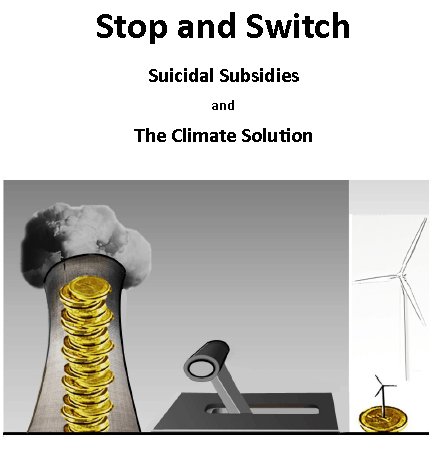

CLIMATE EMERGENCY INSTITUTE
The Health and Human Rights Approach to Climate Change
The Health and Human Rights Approach to Climate Change
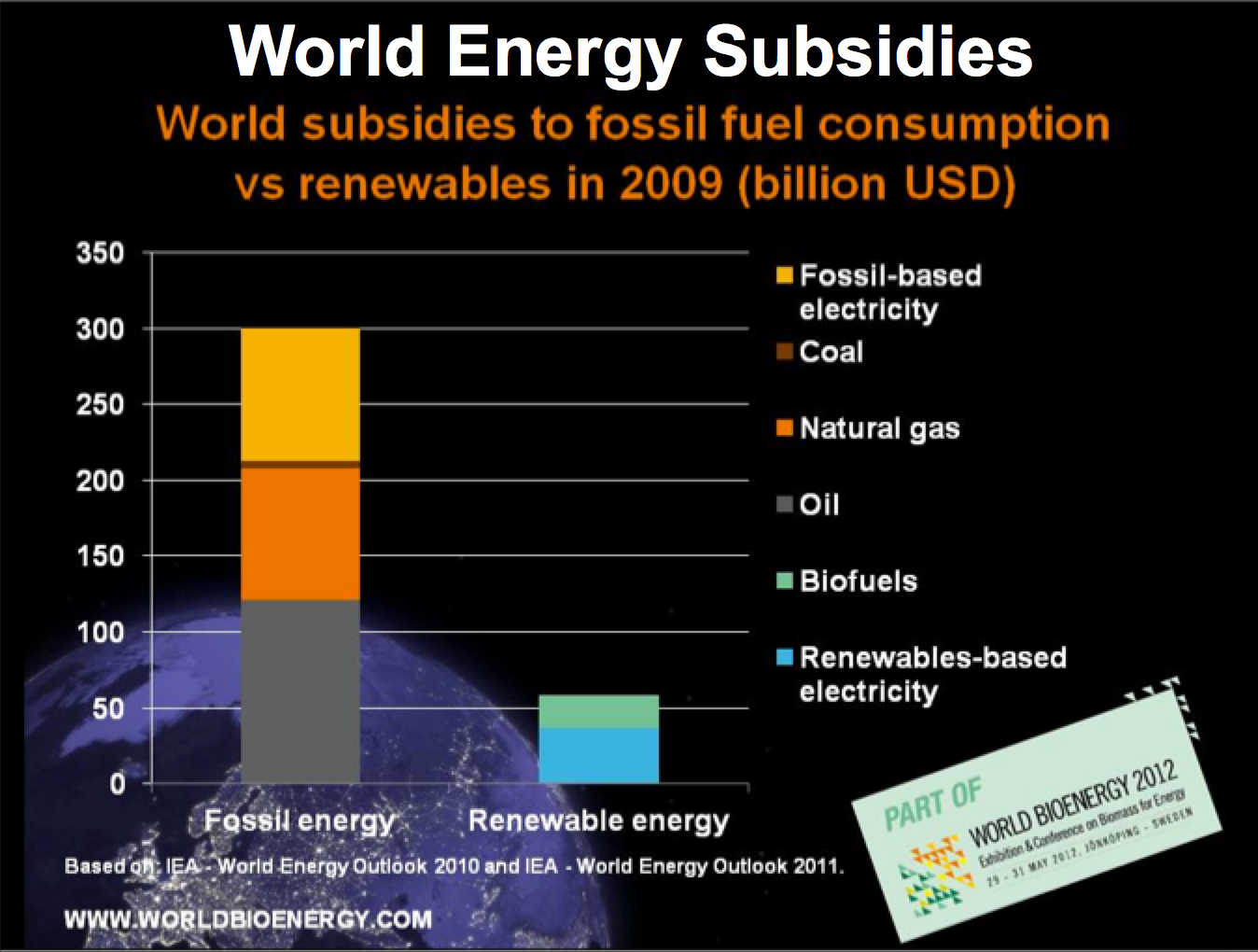
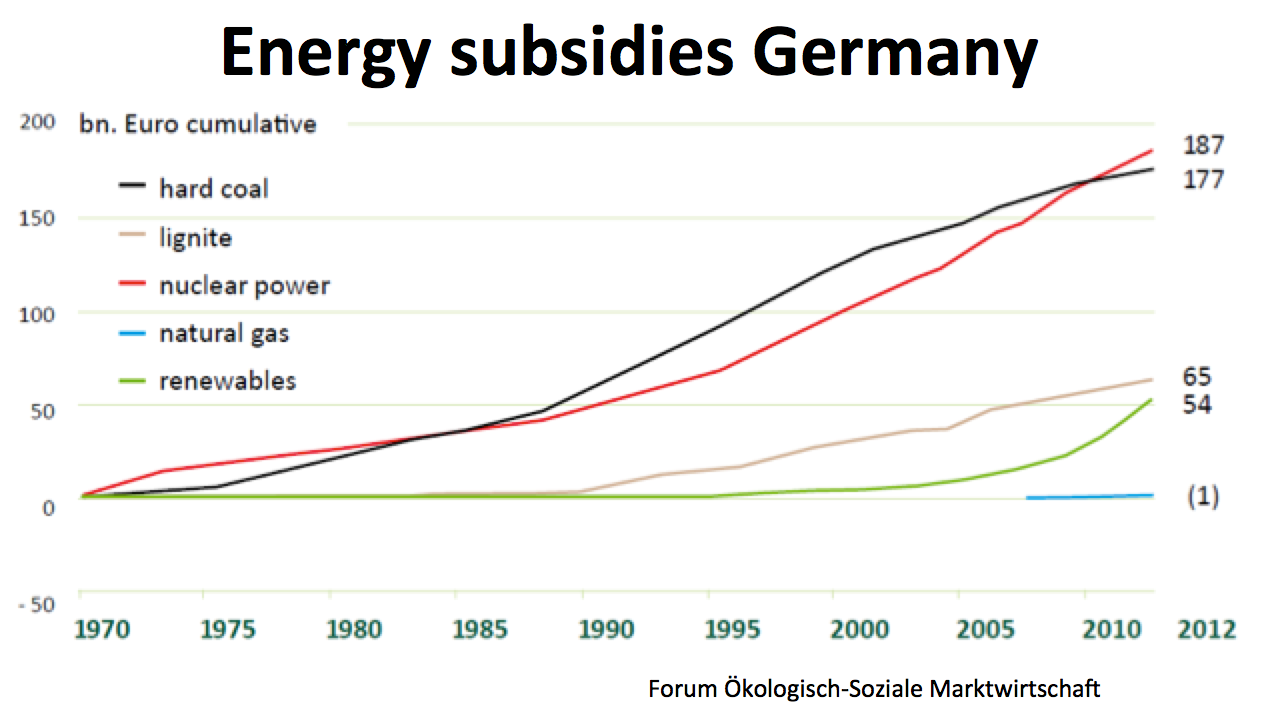
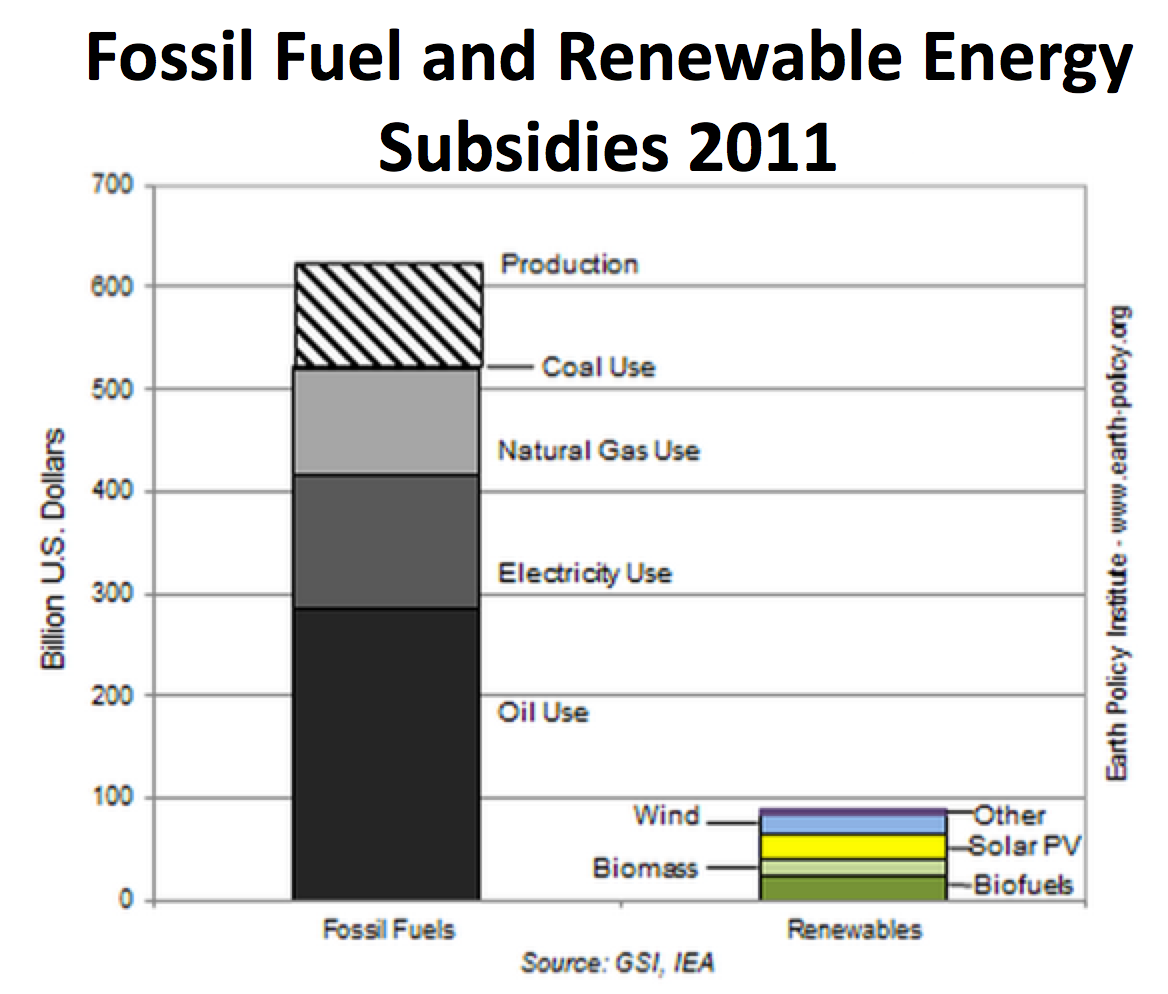
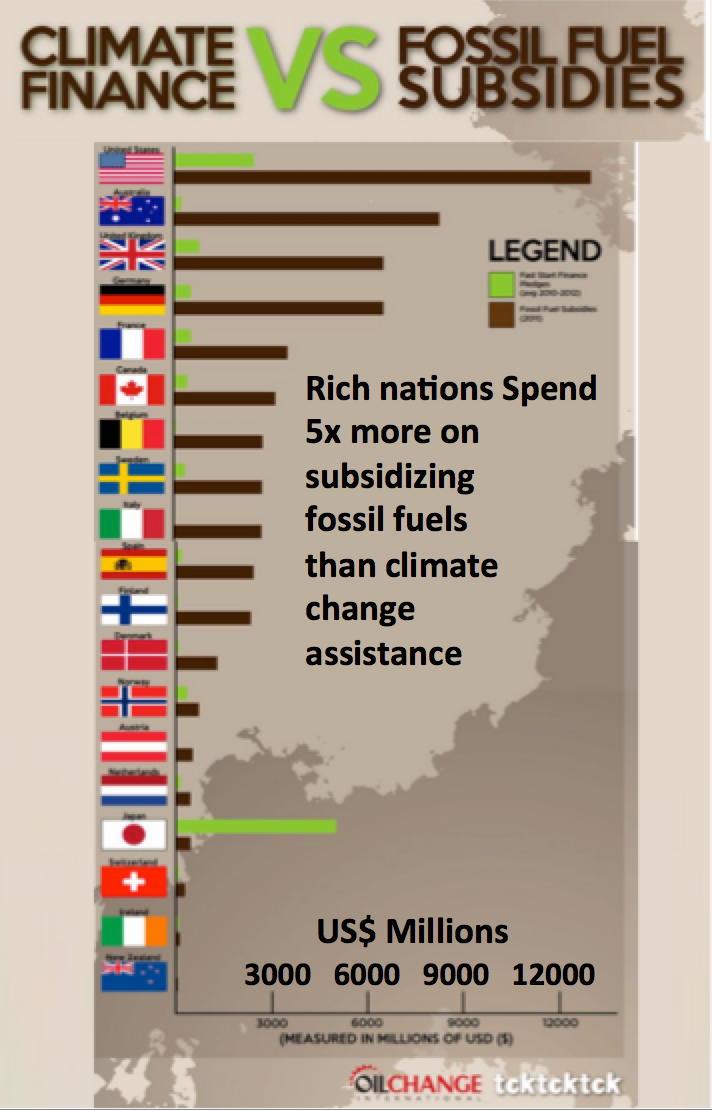
PDF
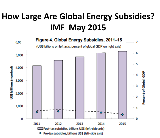
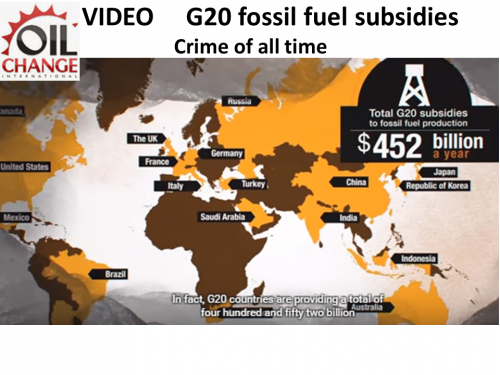
One World Fossil Fuel Subsidies Wrong Tool
Fossil Fuel subsidies benefit the rich not the poor
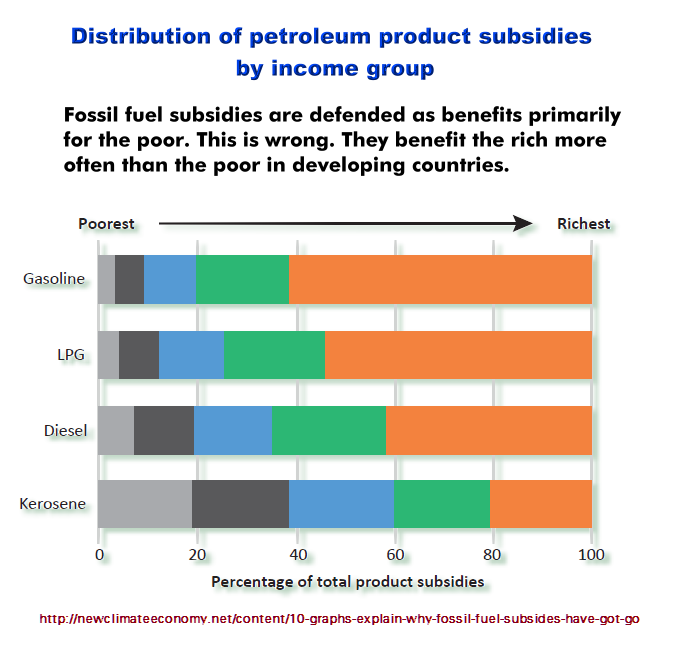
VIDEO
Environmental economics
Environmental economics
IMF May 2019 Globally, subsidies remained large projected at $5.2 trillion (6.5 percent of GDP) in 2017. The largest subsidizers in 2015 were China ($1.4 trillion), United States ($649 billion), Russia ($551 billion), European Union ($289 billion), and India ($209 billion). The report gives subsidies by countries.
Most of the subsidies are not accounted so avoided socio-environmental costs (called externalities). These should charged by government to the fossil fuel corporations as pollution fees.
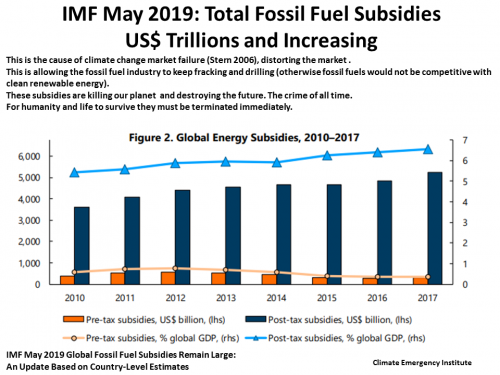
The Crime of All time
Research news
by date
June 2019 G20 Coal Subsidies: Tracking Government Support to a Fading Industry
13 June 2019 Fossil fuel consumption subsidies bounced back strongly in 2018
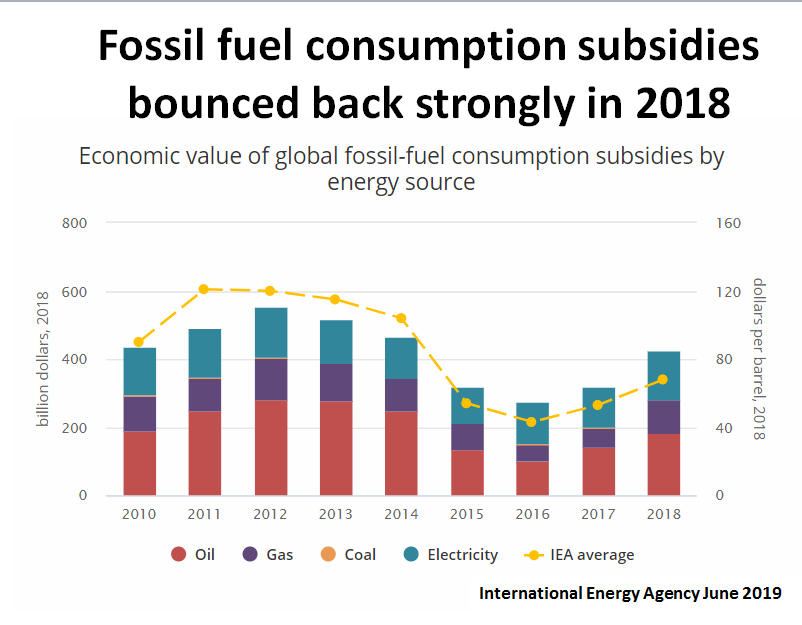
IEA Subsidies